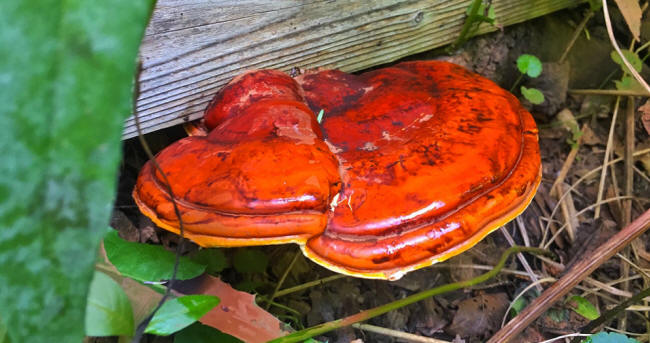Broadleaf Plantain (Plantago major)
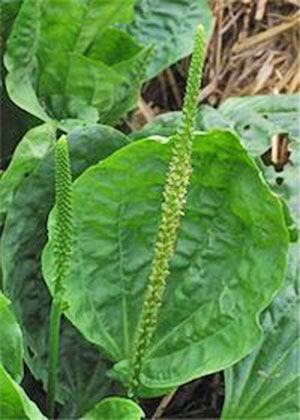
Unlike the large
plantain trees that grow delectable fruits, the
broadleaf plantain is a ground
cover.
Packed with Vitamin
K, calcium, and other vitamins and minerals, the broadleaf
plantain has a cleansing and detoxifying effect on the body.
This medicinal plant
has been used in,
-
treating
colds, diarrhea, burns, open sores, wounds, mouth
ulcers, boils, acne, throat pain, sunburn, fever,
respiratory infections
-
improving
liver and kidney function
-
relieving
gastrointestinal inflammation
-
drawing out
poisons and toxins from bites and stings - even snake
bites!
It's often used as an
anti-inflammatory and an analgesic, and you can make it into a
tea, poultice, or salve.
Where it grows:
-
North America
-
Europe
-
Australia
-
Asia
Burdock (Arctium lappa)
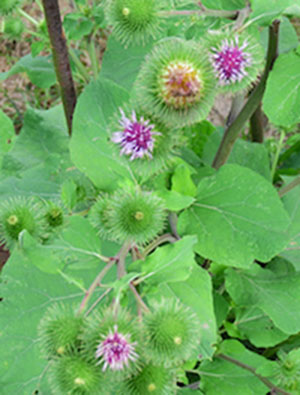
Burdock Root is an antioxidant
powerhouse and has been used in Chinese Medicine for thousands
of years.
Some of its
traditional uses include removing toxins from the blood,
inhibiting certain types of cancers, treating skin issues, and
acting as an aphrodisiac. It's also a natural diuretic, so be
sure to hydrate properly.
Consume in
moderation. Consider trying in a tea, fresh root form, or dried
root powder.
Where it grows:
-
North America
-
Europe
-
Australia
-
Asia
Chickweed (Stellaria media)
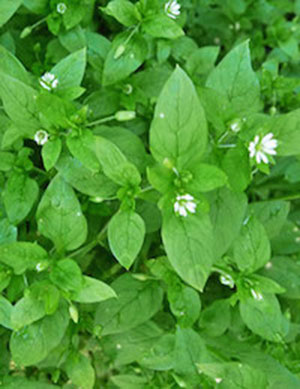
Chickweed is known as a natural
skin rejuvenator, with both cooling and drying effects on
wounds, sores, minor burns, acne, eczema, psoriasis, and other
skin inflammations.
It has also been used
for constipation and relieving irritated eyes. Chickweed is a
rich source of Vitamin C and potassium, and also provides
nutritious trace vitamins and minerals.
It fell out of style
as a popular salad green, so you may want to try it that way
first, or perhaps make chickweed vinegar by infusing it with
apple cider vinegar.
For topical use,
create a salve from the plant's essential oils.
Where it grows:
-
North America
-
South America
-
Central
America
-
Europe
-
Australia
-
Asia
Dandelion (Taraxacum officinale)
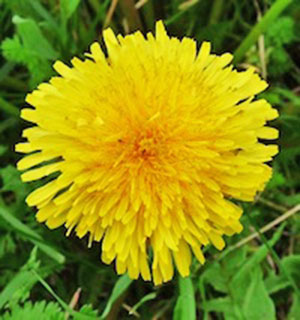
Perhaps the most
prolific and recognizable, the
dandelion is greatly
undervalued.
This beneficial plant
is often found in some of the finest herbal teas, and is used
for its healing benefits to treat,
high blood
pressure, calcium deficiency, cancer, diabetes,
diverticulitis, irritable bowel syndrome, urinary tract
infections, and eczema and psoriasis
Detoxify the liver;
aid digestion; and reduce inflammation.
Use in salad greens,
or dry the leaves and roots to make a tea.
Where it grows:
-
North America
-
South America
-
Central
America
-
Europe
-
Australia
-
Asia
Lamb's Quarters (Chenopodium album)
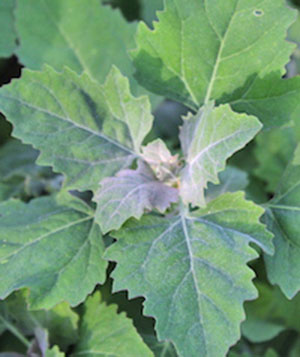
This "prince of wild
greens" (Lamb's
Quarters) is a common garden weed packed with enough
protein to rival spinach, along with Vitamins A and C, calcium,
phosphorous, iron, and a multitude of minerals.
Our ancestors prized
this plant's medicine for its purification properties to
"improve the blood," and also to treat rheumatism and arthritis,
toothaches and tooth decay, constipation, insect stings, eczema,
and gout.
Keep seed consumption
to a minimum, but freely consume the leaves, shoots, and
flowers.
Eat fresh leaves and
flowers mixed in with your other salad greens; steam or stir fry
along with your favorite vegetables; or cook and puree with some
of your favorite soups. You can also grind seeds into flour.
Where it grows:
-
North America
-
Europe
-
Australia
-
Africa
-
Asia
Reishi Mushroom (Ganoderma lucidum)
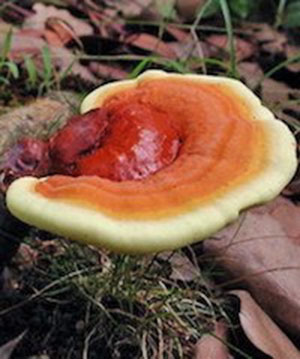
If you are fortunate
enough to live in an area where the reishi (Lingzhi
mushroom) grows, you may already be aware of its long-touted
healing properties.
Mainly used in
prevention of disease, the reishi offers protection,
against
inflammation, various infections, skin disorders, diabetes,
heart and liver disease, sleep disorders, digestive
problems, cancer, fatigue, anxiety, depression, and viruses,
including HIV/AIDS and hepatitis.
It also helps to
restore hormonal imbalance, and regulates various cellular
functions.
Because of its
slightly bitter flavor, it's traditionally dried and then
prepared for a tea, or pulverized into a powder and mixed into
your favorite protein shake.
Where it grows:
-
Eastern North
America
-
South America
-
Europe
-
Asia
Stinging Nettle (Urtica dioica)
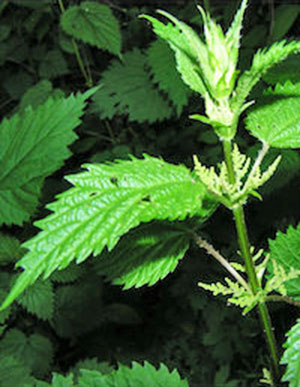
Be careful - this
herb (Stinging
Nettle) can sometimes "sting" and leave a rash when
bare skin comes into contact with the acid-filled needles.
Once boiled, however,
the nettles leave you with leaves that, when ingested, provide
nutritious elements and anti-inflammatory properties.
Nettle leaves have
been used in treating allergy symptoms, lowering blood pressure,
improving immune system response, reducing pain, acting as a
diuretic, treating skin conditions, thickening hair while also
reducing dandruff, and causing a sedative effect.
The plant's root has
been used to address prostate concerns in men. Handle and
harvest while wearing gloves, and then boil or cook to remove
the sting from the nettles.
The easiest and
perhaps most common way to use nettles are in a tea, where you
can flavor with other herbs or spices to taste.
But once cooked, you
can also use nettle leaves like most other greens and use in
salads, or season and bake them (like kale chips), or grind to
make a pesto.
For the roots, toss
them in a stir fry or dry like the leaves for use in a tea.
Where it grows:
Purslane (Portulaca oleracea)
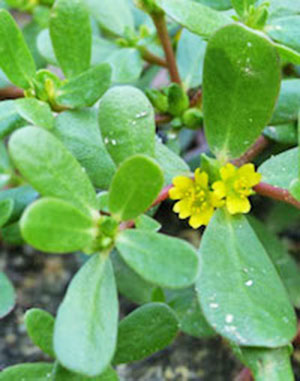
Purslane is an excellent source
of,
fiber; Vitamins
A, B, and C; iron, calcium, magnesium, manganese, potassium,
copper, and powerful antioxidants.
Our ancestors have
used it for hundreds of years to prevent and cure disease.
It's been used to
treat high cholesterol, diarrhea and other gastrointestinal
disorders, skin conditions, and cancer. It's believed to improve
vision, strengthen bones, increase circulation, and aid in
weight loss. Try it mixed with salad greens.
Where it grows:
-
North America
-
South America
-
Central
America
-
Europe
-
Africa
-
Australia
-
Asia
Red
Clover (Trifolium pratense L.)
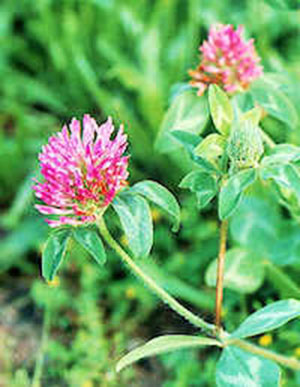
-
Menopause
symptoms
-
Maintaining
bone strength
-
Improving
cardiovascular health
-
Lowering risk
for various types of cancers
-
Reducing skin
inflammation
-
Fighting
respiratory infections
-
Detoxifying
the liver
-
Boosting the
immune system
-
Managing
cholesterol
-
Balancing
hormones
These are just some
of the many disorders and "symptoms of aging" that
red clover has been used to
treat. Dry the herb to make a tea, or make a salve for a topical
medicine.
Where it grows:
-
North America
-
South America
-
Central
America
-
Europe
-
Australia
-
Asia
Yarrow (Achillea millefolium)
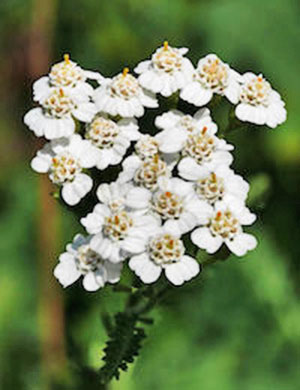
This pretty little
flowering herb (Yarrow)
is wonderful for,
-
skin
conditions
-
stopping
bleeding (external)
-
encouraging
bleeding in cases of amenorrhea
-
alleviating
anxiety
-
acting as a
mild sedative
-
reducing
inflammation
And treating,
-
mastitis
-
high blood
pressure
-
asthma
-
muscle spasms
Use fresh leaves in
salads, soups, or sautéed dishes, or use dried leaves as a
cooking herb.
Where it grows:
-
North America
-
Europe
-
Asia


